- About Thawewali Maa
- History of Thawewali Maa
- How to Reach Maata Temple
- Aarti of Thawewali Maa
- Stuti of Thawewali Maa
- Nine Forms of Maa Durga
- 108 Names of Maa Durga
- Durga Dvatrishnnam Mala
- Maa Durga Aarti
- Durga Kawach
- Temples of Maa Durga
- Navratri 2017
- Nitisholka
- Photo Gallery
- Chhath Puja Photo Gallery
- Useful Websites
- Indian Festivals – 2014
- Maa Thawewali in Media
- About Me
-
Tag Archives: maa thawewali
माँ थावेवाली की कथा – Maa Thawewali Ki Katha
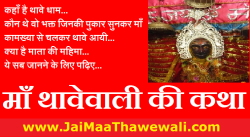
जय माँ थावेवाली माँ दुर्गा तीनो लोको में सर्व शक्तिमान है। ब्रहमांड में मौजूद हर तरह की शक्ति इन्ही की कृपा से प्राप्त होती है और अंत में इन्ही में समाहित हो जाती है । इसीलिए माता दुर्गा को आदि शक्ति भी कहा जाता है। देवताओ ने भी जब राक्षसों के साथ Continue reading… Continue reading
सिंहासनी भवानी माँ थावेवाली की प्रार्थना
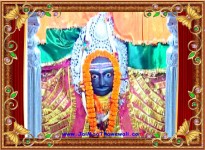
सिंहासनी भवानी माँ थावेवाली की प्रार्थना ॐ शैलपुत्री ब्रह्मचारिणी नमोस्तुते । श्री स्कन्दमाता महागौरी पूजत गणेश ॥ ॐ काण्मांडा कालरात्रि नमोस्तुते । श्री चंद्रघण्टा ध्यावत ब्रह्माविष्णुमहेश ॥ ॐ कात्यायनी सिद्धरात्रि नमोस्तुते । श्री महाकाली तेरा रूप अनेक ॥ ॐ सिंहासनी भवानी थावे वाली नमोस्तुते । शत्रु संहारो मेरे निवारो दुःख क्लेश ॥ —:जय माँ थावेवाली :— Continue reading… Continue reading
Nine Forms of Maa Durga
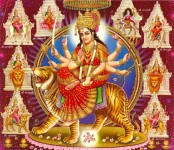
Nine Forms of Maa Durga Maa Durga is worshipped in many different forms. She is a form of “SHAKTI”. The evolution of Shri Maha Saraswati, Shri Maha Laxmi and Shri Mahakali (the 3 main forms of “SHAKTI”) took place from “Shri Brahma”, “Shri Vishnu” and “Shri Mahesh” respectively. Each of Continue reading… Continue reading
Stuti of Thawewali Maa
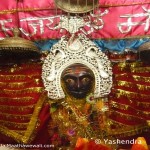
Stuti of Thawewali Maa Om shailputri brahmcharini namostute | shri skandmata mahagouri pujat ganesh || om kanmanda kalratri namostute | shri chandraghanta dhyavat brhmavishnumahesh|| om katyani siddharatri namostute | shri mahakali tera rup anek || om singhasini bhavanii thawe wali namostute | satru sanharo mere nivaro dookh klesh ||
Aarti Thawewali Maa
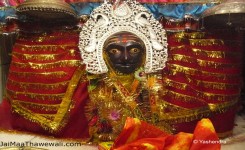
Aarti Thawewali Maa om jai maa thawewali sumirau jo singhasni bhawani | kate-sankat deve karu, hone purn mansha man-mani || katara ghas ke dhan banawe,rahshuji jab lagawe dhyan | saat baagh daye jhare chawal, shakti sabne ma ki jani || om jai maa thawewali, sumirau jo singhasni bhavani | kamakhya,aami,ghodaghat, Continue reading… Continue reading
How to reach Maata Temple Thawe

The Temple of “Maa Thawewali” is situated in “Thawe”, in Gopalganj District in the State of Bihar, INDIA. This is only 6 K.M. from Gopalganj town on the Gopalganj-Siwan National Highway. Distance from the nearest towns & cities are given below: From (City/Town) Distance (in K.M.) Gopalganj 6 K.M. Siwan Continue reading… Continue reading
History of Thawewali Maa
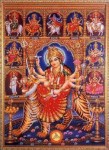
This holy story pertains to about 14th century AD. King ‘Manan Singh’ from ‘Chero’ dynasty was ruler of ‘Hathuwa’. Although Manan Singh was a devotee of Maa Durga but he was having a proud nature. He claimed to be the greatest devotee of Maa Durga and did not like other Continue reading… Continue reading
About Thawewali Maa
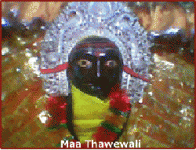
About Thawewali Maa The Goddess Maa “Shakti” is the “Supreme power” which saturates the entire of the universe, and from which the Universe has emanated. There is nothing in the world, which is not “Shakti” in its essence. Shakti is the Great Mother of the Universe. Maa fights and vanquishes Continue reading… Continue reading

